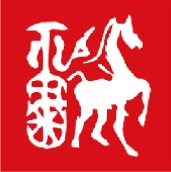LDAP Additions in GitLab EE
This is a continuation of the main LDAP documentation, detailing LDAP features specific to GitLab Enterprise Edition.
User Sync
Once per day, GitLab will run a worker to check and update GitLab users against LDAP.
The process will execute the following access checks:
- Ensure the user is still present in LDAP
- If the LDAP server is Active Directory, ensure the user is active (not
blocked/disabled state). This will only be checked if
active_directory: trueis set in the LDAP configuration 1
The user will be set to ldap_blocked state in GitLab if the above conditions
fail. This means the user will not be able to login or push/pull code.
The process will also update the following user information:
- Email address
- If
sync_ssh_keysis set, SSH public keys - If Kerberos is enabled, Kerberos identity
Note: The LDAP sync process updates existing users while new users will be created on first sign in.
Group Sync
If group_base is set in LDAP configuration, a group sync process will run
every hour, on the hour. This allows GitLab group membership to be automatically
updated based on LDAP group members.
The group_base configuration should be a base LDAP 'container', such as an
'organization' or 'organizational unit', that contains LDAP groups that should
be available to GitLab. For example, group_base could be
ou=groups,dc=example,dc=com. In the config file it will look like the
following.
Omnibus configuration
Edit /etc/gitlab/gitlab.rb:
gitlab_rails['ldap_servers'] = YAML.load <<-EOS
main:
# snip...
group_base: ou=groups,dc=example,dc=com
EOS
Reconfigure GitLab for the changes to take effect.
Source configuration
Edit /home/git/gitlab/config/gitlab.yml:
production:
ldap:
servers:
main:
# snip...
group_base: ou=groups,dc=example,dc=com
Restart GitLab for the changes to take effect.
To take advantage of group sync, group owners or masters will need to create an LDAP group link in their group Settings -> LDAP Groups page. Multiple LDAP groups can be linked with a single GitLab group. When the link is created, an access level/role is specified (Guest, Reporter, Developer, Master, or Owner).
Administrator Sync
As an extension of group sync, you can automatically manage your global GitLab
administrators. Specify a group CN for admin_group and all members of the
LDAP group will be given administrator privileges. The configuration will look
like the following.
Note: Administrators will not be synced unless
group_baseis also specified alongsideadmin_group. Also, only specify the CN of the admin group, as opposed to the full DN.
Omnibus configuration
Edit /etc/gitlab/gitlab.rb:
gitlab_rails['ldap_servers'] = YAML.load <<-EOS
main:
# snip...
group_base: ou=groups,dc=example,dc=com
admin_group: my_admin_group
EOS
Reconfigure GitLab for the changes to take effect.
Source configuration
Edit /home/git/gitlab/config/gitlab.yml:
production:
ldap:
servers:
main:
# snip...
group_base: ou=groups,dc=example,dc=com
admin_group: my_admin_group
Restart GitLab for the changes to take effect.
Group Sync Technical Details
There is a lot going on with group sync 'under the hood'. This section outlines what LDAP queries are executed and what behavior you can expect from group sync.
Group member access will be downgraded from a higher level if their LDAP group membership changes. For example, if a user has 'Owner' rights in a group and the next group sync reveals they should only have 'Developer' privileges, their access will be adjusted accordingly. The only exception is if the user is the last owner in a group. Groups need at least one owner to fulfill administrative duties.
Supported LDAP Group Types/Attributes
GitLab supports LDAP groups that use member attributes member, submember,
uniquemember, memberof and memberuid. This means group sync supports, at
least, LDAP groups with object class groupOfNames, posixGroup, and
groupOfUniqueName. Other object classes should work fine as long as members
are defined as one of the mentioned attributes. This also means GitLab supports
Microsoft Active Directory, Apple Open Directory, Open LDAP, and 389 Server.
Other LDAP servers should work, too.
Active Directory also supports nested groups. Group sync will recursively
resolve membership if active_directory: true is set in the configuration file.
Queries
- Each LDAP group is queried a maximum of one time with base
group_baseand filter(cn=<cn_from_group_link>). - If the LDAP group has the
memberuidattribute, GitLab will execute another LDAP query per member to obtain each user's full DN. These queries are executed with basebase, scope 'base object', and a filter depending on whetheruser_filteris set. Filter may be(uid=<uid_from_group>)or a joining ofuser_filter.
Benchmarks
Group sync was written to be as performant as possible. Data is cached, database queries are optimized, and LDAP queries are minimized. The last benchmark run revealed the following metrics:
For 20,000 LDAP users, 11,000 LDAP groups and 1,000 GitLab groups with 10 LDAP group links each:
- Initial sync (no existing members assigned in GitLab) took 1.8 hours
- Subsequent syncs (checking membership, no writes) took 15 minutes
These metrics are meant to provide a baseline and performance may vary based on any number of factors. This was a pretty extreme benchmark and most instances will not have near this many users or groups. Disk speed, database performance, network and LDAP server response time will affect these metrics.
Troubleshooting
If you see LDAP search error: Referral in the logs, or when troubleshooting
LDAP Group Sync, this error may indicate a configuration problem. The LDAP
configuration /etc/gitlab/gitlab.rb (Omnibus) or config/gitlab.yml (source)
is in YAML format and is sensitive to indentation. Check that group_base and
admin_group configuration keys are indented 2 spaces past the server
identifier. The default identifier is main and an example snippet looks like
the following:
main: # 'main' is the GitLab 'provider ID' of this LDAP server
label: 'LDAP'
host: 'ldap.example.com'
...
group_base: 'cn=my_group,ou=groups,dc=example,dc=com'
admin_group: 'my_admin_group'
-
In Active Directory, a user is marked as disabled/blocked if the user account control attribute (
userAccountControl:1.2.840.113556.1.4.803) has bit 2 set. See https://ctogonewild.com/2009/09/03/bitmask-searches-in-ldap/ for more information. ↩
